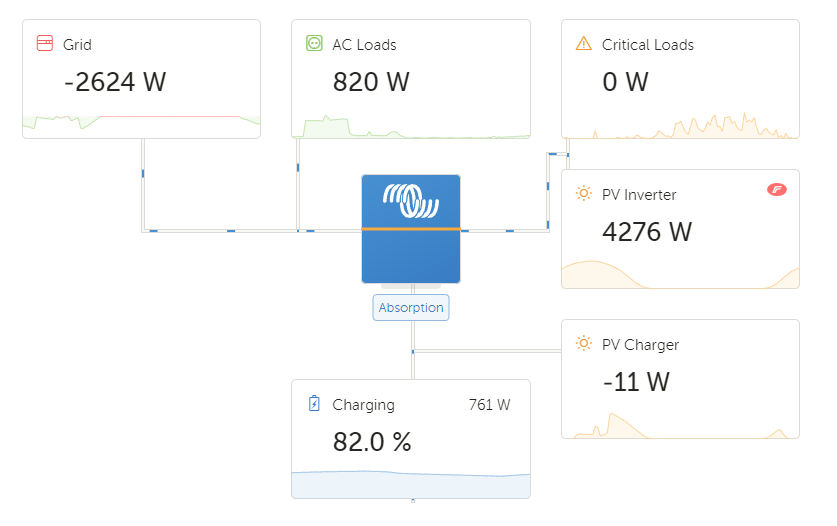Hi
following Setup
-3ph Multiplus 2 5000 v494
- Cerbo GX v2.85
- AC coupled PV Fronius Symo
- MPPT RS 450/100 v1.09
- LFP with REC BMS
- ESS and DVCC enabled
- REC is providing the charge parameters
- MPPT und Multi on external control
I am observing the following behaviour that when the battery voltage reaches the CCL, the MPPTs stops charging and only the AC coupled PV Inverter provides charging via the MPs.
But this is most inefficient, there is enough sun available for the MPPT to charge.
Any ideas or advices?
Many thx!

